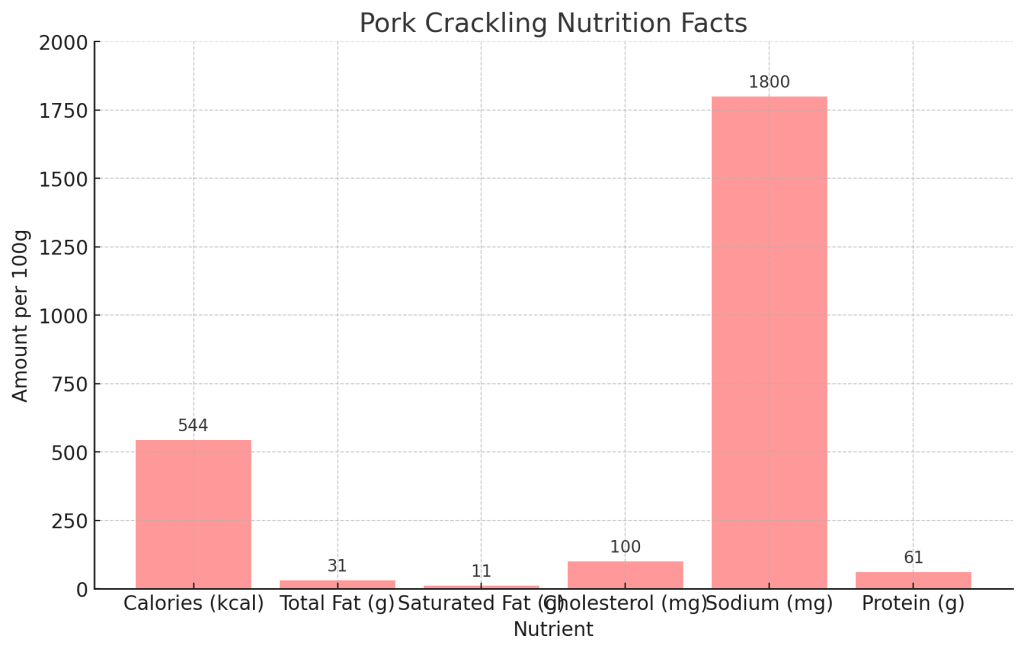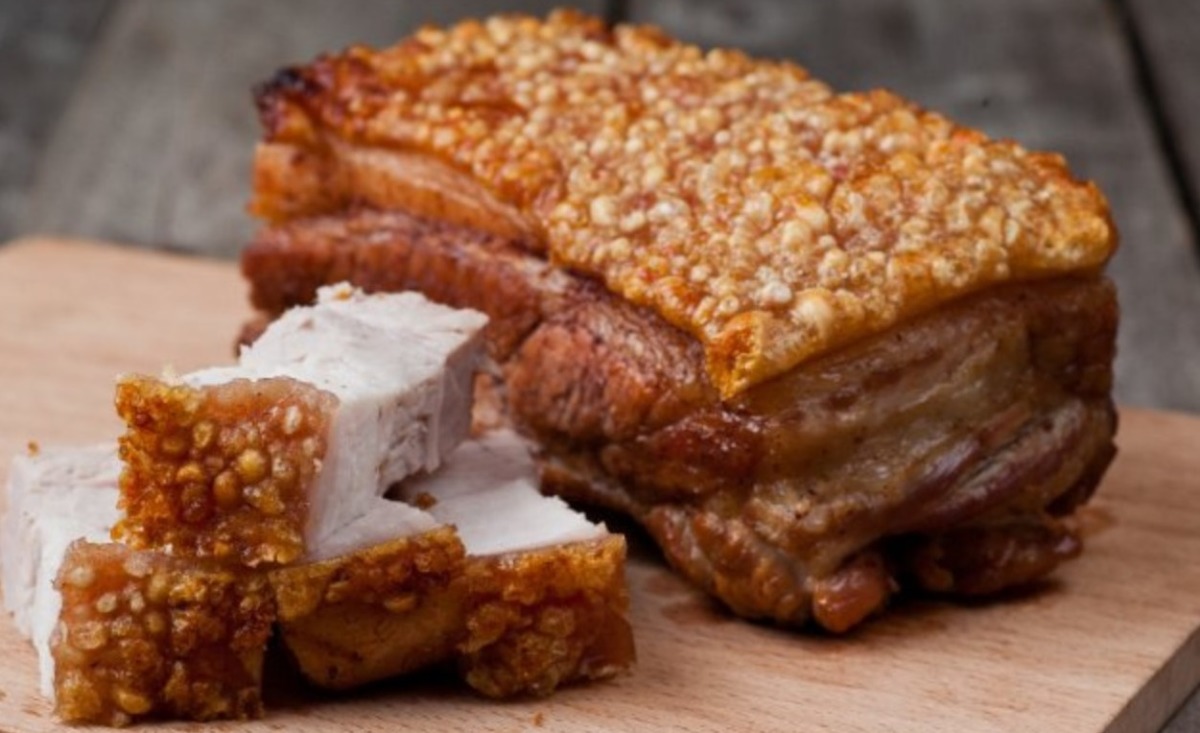Pork crackling is high in calories, saturated fat, and sodium. However, they are a carb-free snack, making them a popular choice among people on a diet. The following article will give you some nutrition facts about the snack, including how much sodium it contains and whether it is a healthy option.
Pork crackling is high in sodium
Pork crackling is a high-fat snack made from uncured pork belly. It has more than 75 percent of its calories from fat. A 1/2-cup serving has 22 grams of total fat and 8 grams of saturated fat. It also has 39 milligrams of cholesterol. Pork crackling has high levels of saturated fat, making it a high-calorie snack. A half-cup serving of pork crackling has over 262 calories, or 13 percent of your daily requirement for men and women.
Pork crackling contains high levels of sodium. It is therefore important to consume these snacks in moderation. Moreover, it is recommended to check the nutritional information on the back of the bag to make sure that you’re getting the right amount of sodium. Some brands are free from added salt or artificial ingredients. Pork crackling is also high in B vitamins, which make it a healthy snack.
Pork crackling does not contain a cured product like bacon. A 1/2 cup serving contains about 726 milligrams of sodium, which is 30 percent of your recommended daily value. You should avoid excessive sodium intake, as it increases blood pressure. Instead, limit yourself to 1,500 to 2,300 milligrams of sodium each day.
Pork crackling is a fried layer of pork skin, fat, and meat. It has a rich, meaty flavor and is crispy and puffy. It is similar to pork rind, but the texture is different. Cracklings can be made from beef, lamb, chicken, and other meats. It has been around since the 1800s, but today it is a premium snack that you can find at upscale restaurants.

Pork crackling is high in calories
Pork crackling is an extremely high-calorie food. A half-cup serving has more than 265 calories, and more than half of these calories come from saturated fat. That’s 13 percent of your recommended daily calorie intake on a 2,000-calorie diet. Despite the high calories, pork crackling is rich in B vitamins and minerals, which make it a healthy choice for snacking.
Pork crackling contains 14 grams of protein, or 28 percent of your recommended daily allowance. Fortunately, this is a high-quality source of protein that provides all of the essential amino acids. However, most Americans already get more than enough protein every day, according to the Centers for Disease Control and Prevention. The recommended daily protein intake for both men and women is between 1,500 and 2,300 milligrams.
Pork crackling is high in calories, but the amount is manageable as it’s low in fat. As long as you eat smaller portions of pork crackling, the snack will not derail your healthy eating plans. If you can keep the amount of pork crackling to a reasonable amount, it’s a delicious and filling snack that won’t hurt your diet.
Pork crackling contains protein and about 43% unsaturated fat. Of this, 13% is steraic acid, which doesn’t raise cholesterol levels. The rest is oleic acid, which is good for the body. Pork crackling has high levels of vitamins and minerals.
Pork rinds are a carb-free snack
Pork rinds are low in carbohydrates and high in protein, making them a great snack option for people on a low-carb diet. These snacks are popular among people on the Atkins Diet, developed by cardiologist Robert C. Atkins in the 1960s. The diet focuses on high-fat and protein foods, while consuming less than 50 grams of carbs per day. This helps the body to burn fat instead of carbs and keeps the body in a state of ketosis.
Pork rinds contain zero carbohydrates, but they do contain 9g of fat and 17 grams of protein. By comparison, a single potato chip has about a ninth of the protein found in pork rinds. Protein is important in the body, because it makes us feel full longer. Similarly, fat works with hormones to tell the body to stop eating when you’re full. Consequently, pork rinds give you more energy and feel fuller than a low-fat meal.
Pork rinds are also a high-calorie snack, so it is best to choose low-sodium varieties. The nutritional label will tell you the amount of sodium per serving, so you can choose a product that will fit your goals. If you’re trying to lose weight or control your blood sugar, choosing a product with lower sodium is important.
Pork rinds have come a long way since they were once considered to be unhealthy, fatty snacks. These days, you can find low-sodium varieties in many grocery stores and online retailers. Purchasing these products will likely be a little more expensive than the regular ones, but price should not be the only consideration in choosing a snack.
Pork rinds are delicious and versatile snacks. You can make them into a tasty crust for meat dishes or use them to coat vegetables. Pork rinds are also a perfect snack for people on a low-carb diet. Some brands have special varieties for keto dieters, while others are geared towards the everyday snacking population.
Pork rinds are a great snack alternative to potato chips. They are high in protein and low in carbohydrates, and they are a great snack to satisfy hunger pangs.

